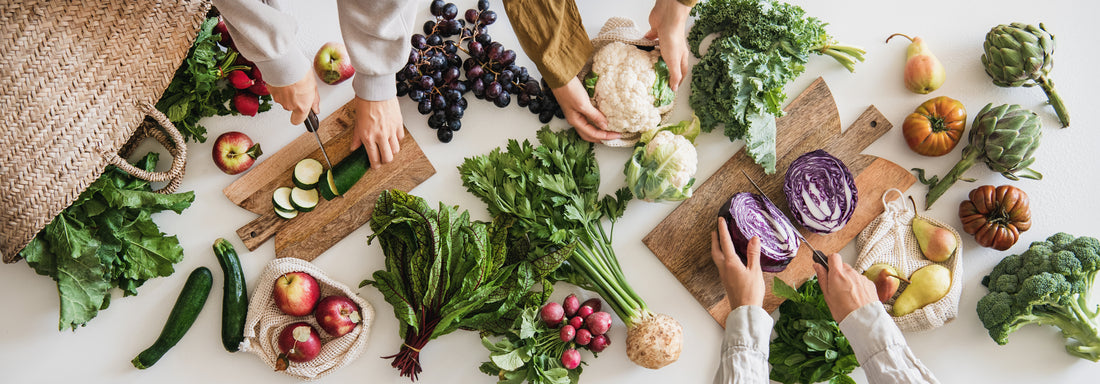Eating fruits and vegetables when they're in season offers numerous advantages. When eating fruits and vegetables that are harvested at their peak have enhanced flavor and more nutritional value.
Eating seasonally brings a diverse array of nutrient-rich options that cater to our body's needs at different times of the year. In spring, vegetables like asparagus, artichokes, and leafy greens flourish, providing an abundance of folate, vitamins A, C, and K, which support detoxification and help prepare the body for the brighter days ahead.
Moving into summer, berries, watermelon, tomatoes, and bell peppers take center stage, offering a bounty of antioxidants, vitamins, and hydration to combat the heat. These fruits and veggies are rich in vitamins C and E, which protect against sun damage and keep the body cool and refreshed.
As we transition to fall, root vegetables like carrots, sweet potatoes, and pumpkins become prominent. They're packed with beta-carotene, vitamin A, and fiber, supporting immune function and providing warmth and sustenance during the cooler weather.
Finally, in winter, citrus fruits like oranges and grapefruits, along with cruciferous vegetables such as broccoli and cauliflower, become prevalent. These foods are loaded with vitamin C and other antioxidants that strengthen the immune system and help fend off colds and flu prevalent in the colder months.
By aligning our diets with seasonal produce, we can capitalize on the nutritional benefits offered by nature's diverse harvest, ensuring our bodies receive the necessary nutrients required for each distinct time of the year.
Winter (Dec-Feb)
- Apples
- Avocado
- Banana
- Beets
- Bok Choy
- Broccoli
- Brussel Sprouts
- Cabbage
- Carrots
- Cauliflower
- Celery
- Chard
- Collard Greens
- Grapefruit
- Kale
- Kiwi
- Leeks
- Lemon
- Lime
- Onions
- Oranges
- Parsnips
- Pears
- Pineapples
- Potatoes
- Pumpkin
- Spinach
- Sweet Potatoes
- Tangerines
- Turnips
- Winter Squash
- Yams
Spring (Mar-May)
- Apples
- Apricots
- Artichokes
- Asparagus
- Avocados
- Bananas
- Broccoli
- Cabbage
- Celery
- Collard Greens
- Garlic
- Kale
- Kiwi
- Lemons
- Lettuce
- Limes
- Mushrooms
- Onions
- Peas
- Pineapples
- Radishes
- Rhubarb
- Snap Peas
- Spinach
- Strawberries
- Turnips
Summer (June-Aug)
- Apples
- Apricots
- Avocados
- Basil
- Beets
- Bell Peppers
- Blackberries
- Blueberries
- Cantaloupe
- Carrots
- Celery
- Cherries
- Corn
- Cucumbers
- Eggplant
- Garlic
- Green Beans
- Honeydew
- Lemons
- Lima Beans
- Limes
- Mango
- Nectarines
- Peaches
- Raspberries
- Strawberries
- Summer Squash
- Tomatoes
- Watermelon
- Zucchini
Fall (Sept-Nov)
- Apples
- Artichokes
- Bananas
- Beets
- Bell Peppers
- Broccoli
- Brussel Sprouts
- Cabbage
- Carrots
- Cauliflower
- Celery
- Collard Greens
- Cranberries
- Cucumbers
- Eggplant
- Figs
- Garlic
- Ginger
- Grapes
- Green Beans
- Kale
- Kiwi
- Lemons
- Lettuce
- Lime
- Mangos
- Mushrooms
- Onions
- Parsnips
- Pears
- Peas
- Pineapples
- Plums
- Pomegranates
- Potatoes
- Pumpkin
- Radishes
- Spinach
- Sweet Potatoes
- Turnips
- Winter Squash
- Yams


